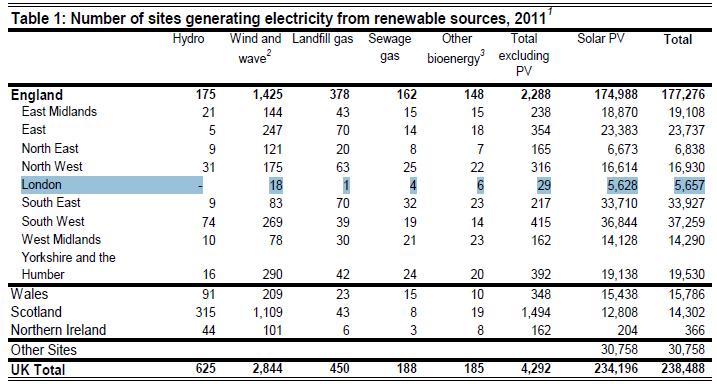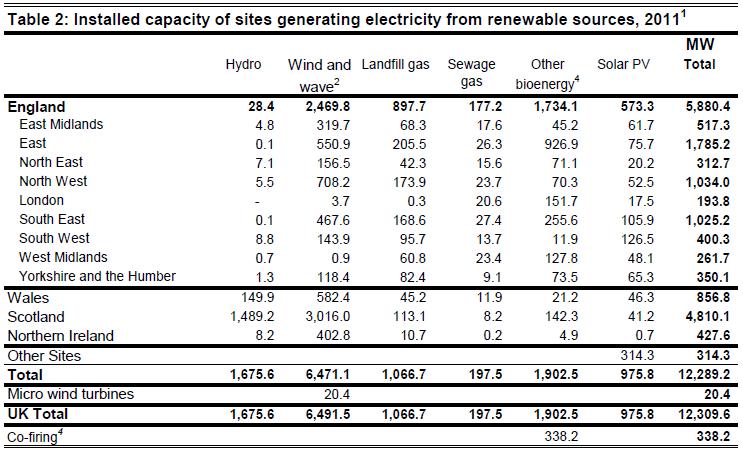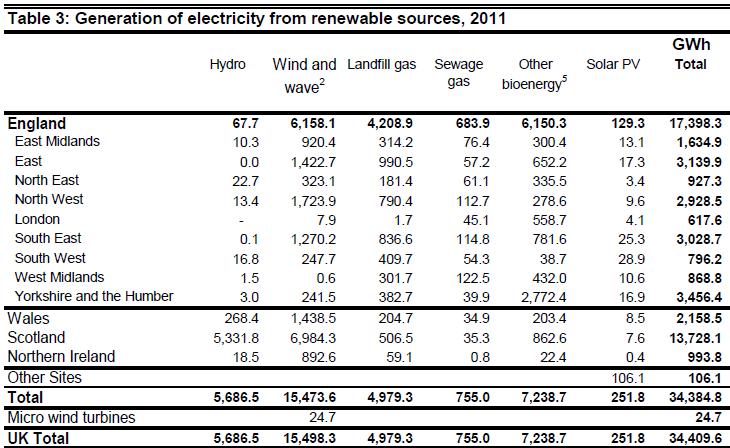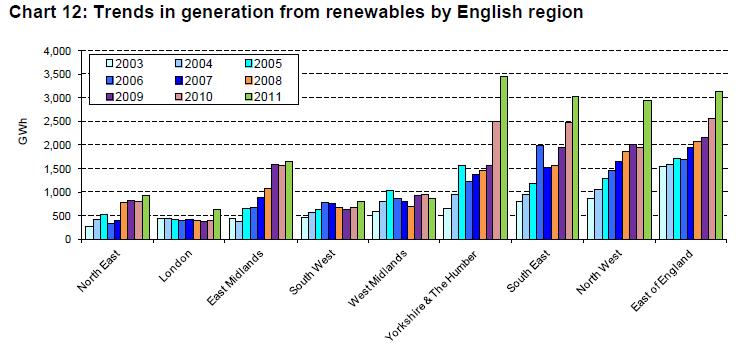Site search:
-
What’s new?
Energy for London Tags
Brent Buildings Camden Carbon Emissions CHP Cities Climate Adaptation Community Heating Community Initiatives Croydon Data DECC Decentralised Energy Distribution ECO Energy Costs Energy Efficiency Enfield FIT Fuel Poverty Funding Green Deal Hackney Haringey Housing Islington Lambeth Library Local Authorities Mayor Newham Ofgem Olympics Photovoltaics Planning RE:FIT RE:NEW Renewable Energy Retrofit Southwark Tower Hamlets Transport Waltham Forest Waste WestminsterEnergy Archives:
- February 2021 (1)
- January 2021 (15)
- December 2020 (15)
- November 2020 (9)
- October 2020 (3)
- August 2020 (5)
- July 2020 (3)
- June 2020 (4)
- April 2020 (10)
- March 2020 (5)
- February 2020 (2)
- January 2020 (3)
- October 2019 (1)
- September 2019 (4)
- August 2019 (2)
- July 2019 (1)
- August 2018 (1)
- November 2016 (8)
- October 2016 (8)
- September 2016 (2)
- August 2016 (8)
- July 2016 (14)
- April 2016 (12)
- March 2016 (16)
- February 2016 (8)
- January 2016 (4)
- December 2015 (1)
- November 2015 (1)
- October 2015 (16)
- September 2015 (3)
- June 2015 (1)
- May 2015 (1)
- April 2015 (1)
- March 2015 (1)
- February 2015 (1)
- January 2015 (1)
- December 2014 (18)
- November 2014 (4)
- August 2014 (8)
- July 2014 (7)
- June 2014 (25)
- May 2014 (8)
- April 2014 (4)
- March 2014 (12)
- February 2014 (7)
- January 2014 (13)
- December 2013 (11)
- November 2013 (15)
- October 2013 (15)
- September 2013 (18)
- August 2013 (5)
- July 2013 (20)
- June 2013 (33)
- May 2013 (8)
- April 2013 (16)
- March 2013 (25)
- February 2013 (14)
- January 2013 (20)
- December 2012 (23)
- November 2012 (23)
- October 2012 (25)
- September 2012 (14)
- July 2012 (12)
- June 2012 (43)
- May 2012 (20)
- April 2012 (8)
- March 2012 (40)
- February 2012 (39)
- January 2012 (40)
- December 2011 (22)
- November 2011 (40)
- October 2011 (33)
- September 2011 (48)
- August 2011 (40)
- July 2011 (58)
- June 2011 (41)
- May 2011 (80)
- April 2011 (38)
- March 2011 (33)
- February 2011 (25)
- January 2011 (24)
- December 2010 (3)
- November 2010 (7)
- October 2010 (6)
- September 2010 (7)
- August 2010 (1)
- July 2010 (2)
- June 2010 (4)
- May 2010 (1)
- March 2010 (3)
- February 2010 (3)
- December 2009 (5)
- November 2009 (2)
- October 2009 (3)
- July 2009 (3)
- June 2009 (1)
- April 2009 (1)
- March 2009 (1)
- February 2009 (1)
- January 2009 (1)
- December 2008 (2)
- October 2008 (1)
- September 2008 (1)
- July 2008 (1)
- March 2008 (2)
- January 2008 (2)
- October 2007 (1)
- September 2007 (3)
- July 2007 (1)
- March 2007 (1)
- February 2007 (3)
- November 2006 (3)
- August 2006 (1)
- February 2006 (1)
- May 2005 (1)
- February 2004 (1)
Tag Archives: Renewable Energy
Energy and Climate Questions to the Mayor
December 2012: This month the Mayor has been asked questions in relation to: the delay in the publication to the Mayor’s evaluation report of his home energy efficiency programme, RE:NEW; a response to the recent report that London experienced the largest increase in the number of Excess Winter Mortality of any region; the number of low carbon and renewable energy installations installed in fire stations currently threatened with closure; on the Mayor’s recent statement that the “energy policy of the country is in chaos“; the Deputy Mayor’s views on renewable energy; the representation of decentralised energy generators on the Mayor’s High Level Electricity Working Group; the Energy Bill and its support to the attainment of the Mayor’s 25 per cent decentralised energy target
Progress on the Mayor’s DE target; CHP capacity in London; TfL arrangements to secure electricity supply for the London Underground ; TfL energy costs; TfL procurement of electricity from London-based low carbon and renewable energy generators
progress being made under the London Energy Efficiency Fund (LEEF); the UK’s attractiveness to clean energy investment; discussions with energy companies over recent price hikes; a London target under the Energy Company Obligation (ECO)
job losses in the insulation industry in London; Mayor’s liaison with the Insulation Industry Forum; the slow take up under the Green Deal and the January launch of the Green Deal; London bid to the Green Deal Pioneer Places fund and here.
Energy efficiency improvements linked to home extensions and conversions; the 2018 energy efficiency requirement for the private rented sector (and here); that there will be no zero carbon homes developed on the Greenwich Peninsula; checks on the standard of work completed under the RE:NEW programme; future energy consumption related to London’s future population growth; the anticipated energy output from the 25 decentralised energy schemes currently being supported by the Mayor; funding directed to the Mayor’s decentralised energy programme; papers from future meetings of the Mayor’s High Level Electricity Working Group; and the potential for anaerobic digestion in London and the number of future AD plants in London.
Previous months questions to the Mayor can be found here.
Posted in News
Tagged Anaerobic Digestion, CHP, Decentralised Energy, Energy Efficiency, Fuel Poverty, Funding, Green Deal, RE:NEW, Renewable Energy
Leave a comment
Government Policy on generation of electricity by local authorities
17 December 2012: John Pugh, MP for Southport, has asked a useful parliamentary question around what the Government’s position is on promoting the generation of electricity by local authorities. Apparently it has one.
Col 534W: John Pugh: To ask the Secretary of State for Energy and Climate Change what his policy is on the generation of electricity by local authorities; and if he will make a statement.
Gregory Barker: In 2010, we gave local authorities the power to sell electricity generated from renewable sources. It is therefore up to local authorities to generate and sell electricity if they wish and we are encouraging them to do so where this is appropriate. We have also facilitated this through ‘lite’ electricity supply licence, which would allow a local authority district heating operator to sell electricity at retail rates to consumers.
We are also supporting community ownership of localised renewable energy projects through the Feed-in-Tariffs scheme. Local projects engage neighbourhoods and communities in becoming involved with generating local heat and power e.g. Combined Heat and Power with District Heating (CHP-DH) networks in Woking, Southampton, Nottingham and Sheffield.
Local authorities also have a role in encouraging energy efficiency take up, including the Green Deal, and looking after consumer interests, for example, through the pioneer places and core cities initiatives and through supporting or running collective switching schemes.
Some points on this:
- Further to the link to the 2010 DECC news release (above) granting powers to local authorities to be able to sell renewable power – additional information is provided in this letter from the then Secretary of State to local authority Chief Executives ‘Unlocking Local Power‘ .
- Little progress has been made on the so-called ‘lite’ electricity supply licence: no local authorities have actually applied to hold a licence since Ofgem introduced this opportunity in March 2009. The GLA have however recently announced that they will – more on this in an earlier post.
- For the latest on FITs for Community Energy schemes – see the following post.
- All the neighbourhood heat and power schemes referenced in the PQ – though excellent – were all developed decades ago. Whilst good to see that these schemes are still expanding their heat networks, it would have been more encouraging to highlight progress in some new city-wide district heating schemes – however Government support in this area has been extremely limited.
Posted in News
Tagged Community Heating, Community Initiatives, FIT, Local Authorities, Ofgem, Renewable Energy
Leave a comment
Energy buying plan to unlock investment for growth
December 2012: Interesting press release from the Cabinet Office stating that Government will use its considerable buying power to contract PPAs (power purchase agreements) directly with stalled renewable electricity projects.
“The Government Procurement Service (GPS), part of the Cabinet Office Efficiency and Reform Group, is the UK’s largest energy customer, spending £1.5bn a year on gas and electricity. GPS buys energy for 75% of the entire public sector which accounts for 3% of total UK energy demand. In the New Year it will open a pilot to diversify 2% of its demand, worth £25m a year.
For the first time ever, contracts will be offered direct to renewable generators for a set proportion of their capacity for up to 25 years. This will appeal to new projects which can bank on the guaranteed business to attract investment. We are aware of at least 150 projects which are currently stalled and may need finance. A small 10MW generator is estimated to return £5m a year to the local economy as well as creating jobs in the energy and construction industries. This pilot is for non-intermittent power such as biomass and energy from waste.”
London’s first hydroelectric turbine
November 2012: The National Trust started London’s first ever Archimedes Screw hydroelectric turbine at Morden Hall Park in south west London sited on the river Wandle. Local MP for Kingston and Surbiton, Ed Davey – who is handily also the Secretary of State at DECC – was in attendance at the launch event. The National Trust’s news release adds that the “Archimedes Screw turbine will generate enough electricity to power the Park’s new award-winning visitor centre. By acting like a modern waterwheel it will harness the power of the river to generate electricity. It is estimated that it will generate 59,000 kWh a year – enough for about 16 average households.” The 8.5kWe turbine had a high capital cost – reported at £350,000 fully installed – and much debate about how this cost should be viewed is presented on the following Guardian article (ie high capital cost, but very low ongoing costs for the generator over its life span).
Further details on the project are posted on the Morden Hall Park blog and information on the Archimedes Screw itself on the website of the technology provider for this installation, Halliday’s Hydropower.
A further hydropower project, also using an Archimedes Screw, is planned in London at Teddington Weir, further information for which is at project website Ham Hydro (and in an earlier post here).
‘Community energy is on the up. But will the government hobble it?’
29 October 2012: Good post on the Guardian’s website about the emergence of community-led energy schemes over the past year and – worryingly – the potential negative impacts that might arise out of the Government’s forthcoming proposals for the Electricity Market Reform (EMR) in the Energy Bill on smaller scale generators. Some of these issues are picked up in a useful briefing by the Renewable Energy Association (REA) ‘ 10 actions needed to make EMR work for renewable power‘.
Posted in News, Renewable Energy
Tagged Community Initiatives, Decentralised Energy, EMR, Renewable Energy
Leave a comment
Renewable Electricity Generation in London begins to grow
1 October 2012: DECC’s latest issue of Energy Trends includes new regional statistics on renewable electricity (not energy) generation. The article – Renewable electricity in Scotland, Wales, Northern Ireland and the regions of England in 2011– highlights (in Table 1) that 5,657 renewable electricity generating sites were operating in London as at the end of 2011. Not surprisingly the vast majority of these were photovoltaics (PV) – 99.48% to be precise – with a further 58 renewable technology schemes registered (this however compares with only 16 (non-PV) schemes as registered in last year’s statistics). The number of PV installations has risen more than fivefold compared to the number (1,044) in place at the end of 2010.
More importantly in terms of capacity and output, the following two tables (copied below) reveal that in 2011:
- London has 193.8 MW of electrical generating capacity (compared to 117.1 in 2010) – a 65% increase in renewable capacity over the year.
- PV capacity has risen six fold from 2.8 MW in 2010 to 17.5 MWas at the end of 2011
- However ‘Other biomass’ has seen the biggest overall increase in capacity – just over 40MW – over the year
- Oddly no sewage gas plants were registered in the 2010 statistics (a number of schemes have been operating in the capital for sometime…); it is now reported that 4 schemes operate in London to a total generating capacity of 20.6 MW.
- The ‘Wind and Wave’ category has increased by 8 in terms of installation numbers (10 to 18), however the capacity number remains the same – 3.7 MW – as of last year.
Following the level of overall renewable capacity added, there’s been a 60% increase in the amount of renewable electricity generated, rising from 385.7 GWh (gigawatt-hours) in 2010 to 617.6 GWh in 2011 (see table below).
The article provides further analysis and comparisons of London’s output as compared to the rest of the English regions, which, as is already well documented, remains modest due to the limitations the capital has in exploiting key renewable technologies such as wind and landfill. Chart 12 in the article (copied below) however provides some cause for optimism as it illustrates that changes made to the national policy framework for renewables over the past few years- particularly with the advent of Feed in Tariffs (FITs) and Renewable Obligation (RO) Banding – is finally supporting London to take a small but positive step forward in terms of its renewable contribution, after several years of only limited progress.
Posted in News, Renewable Energy
Tagged Anaerobic Digestion, Data, Photovoltaics, Renewable Energy, Waste
Leave a comment
Renewables Roadshow hits Wembley
September 2012: The Renewables Roadshow will be at Wembley Stadium on 3 October 2012 and features a large number of energy efficiency and renewable energy company products and exhibitors. Apply for free tickets at renewables-roadshow.co.uk. The showguide can be downloaded here [16MB document].
Merton Rule comes in for criticism
July 2012: Established by Housing Minister Grant Schapps, the Local Housing Delivery Group recently published its review of planning and also local standards in new housing development. The news release sets out that “With the reduction in central planning guidance and the forthcoming abolition of regional housing targets, the role of local authorities in planning for new homes becomes even more critical and the new National Planning Policy Framework (NPPF) poses a challenge for them to develop Local Plans which are both sustainable and viable.”
The Group has produced an interim report: A Review of Local Standards for the Delivery of New Homes. It concludes that there is “significant scope for simplification of the standards regime and recommends an urgent Government-backed review and consolidation of existing local housing standards to ensure they meet the aspirations of local communities without undermining viability.”
As such, the report looks at four key areas of standards that apply to new housing, and have included in their consideration requirements related to energy. The Group have come out critical to the ‘Merton Rule’ and similar mechanisms established by local authorities to drive the use of renewable energy through planning, stating:
“The Merton Rule was the first local planning policy to set a requirement on renewable energy for certain types of new development. It was named after the London borough that established it in 2003.
The rule required any new residential development of more than 10 units, or any commercial building over 1,000 square metres, to generate at least 10% of its energy needs from on-site renewable energy equipment in order to reduce its reliance on the National Grid and to reduce its CO2 emissions. Compliance with the policy was required as a condition of planning consent.
About half of the UK’s local authorities introduced a Merton-type rule. It also became part of national planning guidance through PPS 22. However, the variations on the Rule have now become confusing:
- Sometimes the targets are expressed as a percentage of energy generated (measured in kW hours).
- Sometimes the targets are around a decrease in CO2 instead (measured in tonnes of CO2e). Some local planning authorities “expect” a developer to achieve a 10% reduction through use of micro-renewables, others “require” 20%reductions or more.
- There are frequently different thresholds for when the policy is required – often 1,000 square metres or 10 units, but sometimes no threshold.
- About half of all planning authorities have no policy on this issue at all.”
The 2004 London Plan (the Mayor’s spatial planning strategy for London) also had a similar type of renewable energy requirement for new development, but this has been amended over time to set instead carbon reduction targets for new development in line with the Government’s zero carbon target for new homes by 2016. Go to the www.zerocarbonhub.org for more information on the 2016 target and read an earlier post for details on the Mayor’s current planning and energy requirements. Further information on the London Plan, including links to earlier version of the Plan, can be found on its wikipedia page here.
Posted in Library, News
Tagged Housing, London Plan, Merton, Planning, Renewable Energy
Leave a comment
Mayor to encourage community energy projects
June 2012: The Mayor has published revised ‘early minor alterations to the London Plan’ aimed at ensuring that the London Plan is fully consistent with the Government’s National Planning Policy Framework (published March 2012).
Page 30 of the ‘Early Minor Alterations’ document sets out a proposed revision to Chapter 5 of the London Plan – which addresses planning and climate change – to support community-led initiatives renewable and low carbon projects through neighbourhood planning. The exact amended text (in bold) follows below:
5.41 The Mayor’s supplementary planning guidance will set out broad guidelines to assist boroughs and, where appropriate,neighbourhoods, to define locations where stand-alone renewable energy schemes would be appropriate. The increased use of renewable heat will also significantly depend on the growth of heat networks. The Mayor and Boroughs will also encourage community-led initiatives for renewables and low carbon energy and examine how they can be supported through neighbourhood planning.” [page 30]
The supplementary planning guidance referred to is on renewable energy (which is also referred to in para 5.40 of Chapter 5 – see link above) and has, as yet, not been published by the Mayor. A major renewable energy study for London has however been completed and was issued in January 2012.
Further information to the background on new neighbourhood plans can be viewed here.
Posted in Library, News
Tagged Community Initiatives, Mayor, Planning, Renewable Energy
Leave a comment
Updated FIT Tariff Table
May 2012: Following today’s announcement by DECC over changes to the FIT programme for photovoltaics, Ofgem have published a table which sets out the tariff rates for the Feed-in Tariff scheme from 1 August 2012, for non-PV installations only. Download here.
Ham Hydro Update
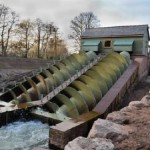 March 2012: A quick update on the community-led Ham Hydro renewable energy project which has been mentioned in some earlier posts – the hydropower scheme involves the installation of “3 Archimedean screw turbines on Teddington Weir to generate approximately 1,900 MWh per annum – enough to power 600 homes”. A formal planning application to Richmond Council was submitted a few months ago, and the full documentation of the scheme’s submission can be viewed on Richmond Council’s planning website here.
March 2012: A quick update on the community-led Ham Hydro renewable energy project which has been mentioned in some earlier posts – the hydropower scheme involves the installation of “3 Archimedean screw turbines on Teddington Weir to generate approximately 1,900 MWh per annum – enough to power 600 homes”. A formal planning application to Richmond Council was submitted a few months ago, and the full documentation of the scheme’s submission can be viewed on Richmond Council’s planning website here.


